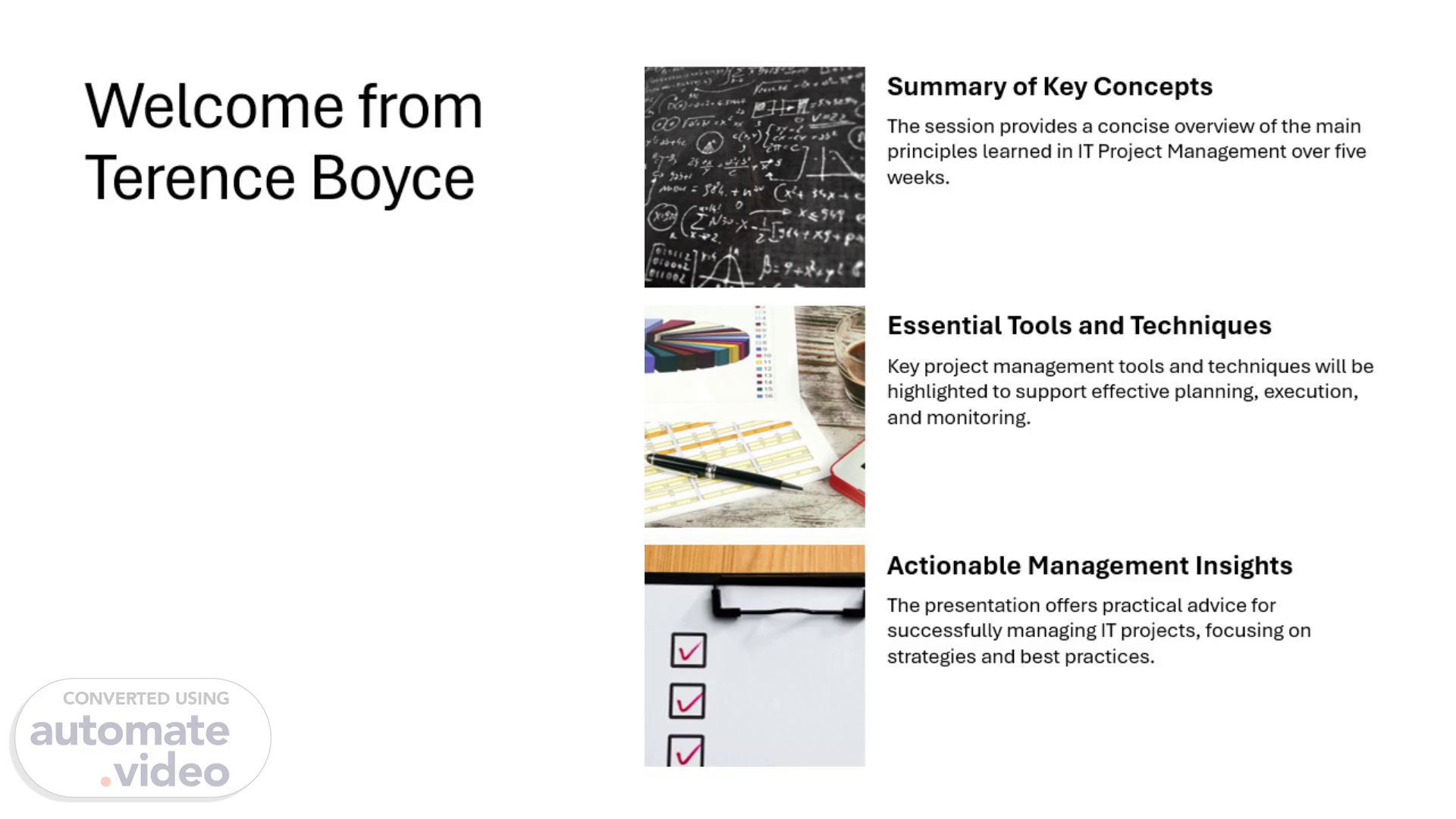Scene 1 (0s)
[Virtual Presenter] Image source: Microsoft 365 content library Hello, I’m Terence Boyce. Today’s date is 09/20/25. In this briefing, I’ll synthesize what I’ve learned over the past five weeks in IT Project Management, focusing on techniques, skills, and insights that are critical to successful project delivery..
Scene 2 (32s)
[Audio] Image source: Microsoft 365 content library IT project management involves defining project scope with clear deliverables, ensuring alignment with business goals for maximum value, and controlling risks throughout execution. For example, in ERP deployment, precise scope and alignment are crucial for seamless integration. Careful planning at every stage significantly reduces the risk of costly overruns and project delays..
Scene 3 (1m 5s)
[Audio] Image source: Microsoft 365 content library Effective project managers excel in communication, negotiation, and stakeholder management, ensuring project goals are clearly understood and conflicts are resolved. Directive leadership focuses on control and decision-making, while servant leadership empowers teams through support. Adaptive leadership encourages flexibility, enhancing team alignment by quickly responding to changing project needs..
Scene 4 (1m 39s)
[Audio] Image source: Microsoft 365 content library Project integration management ensures all project elements—scope, time, cost, and quality—work together harmoniously. The triple constraint graphic illustrates how changes in one area impact the others. Effective integration prevents siloed decisions, keeps teams aligned, and maintains project balance for successful outcomes..
Scene 5 (2m 9s)
[Audio] Image source: Microsoft 365 content library Project selection should use methods like cost-benefit analysis and strategic fit to ensure alignment with business goals. Initiation involves creating charters, defining stakeholders, and setting project objectives. Requirement gathering uses interviews, surveys, and prototypes; for example, comparing cloud vs. on-premise solutions clarifies needs. Thorough initiation helps prevent scope creep by establishing clear boundaries..
Scene 6 (2m 45s)
[Audio] Image source: Microsoft 365 content library Project scheduling tools like Gantt charts, critical path analysis, and agile boards help visualize timelines and dependencies. Quantitative scheduling enhances time management and tracking. By actively managing dependencies early, teams can avoid milestone slippage—such as delivering a software feature on time by resolving integration issues ahead—resulting in more realistic and achievable project schedules..
